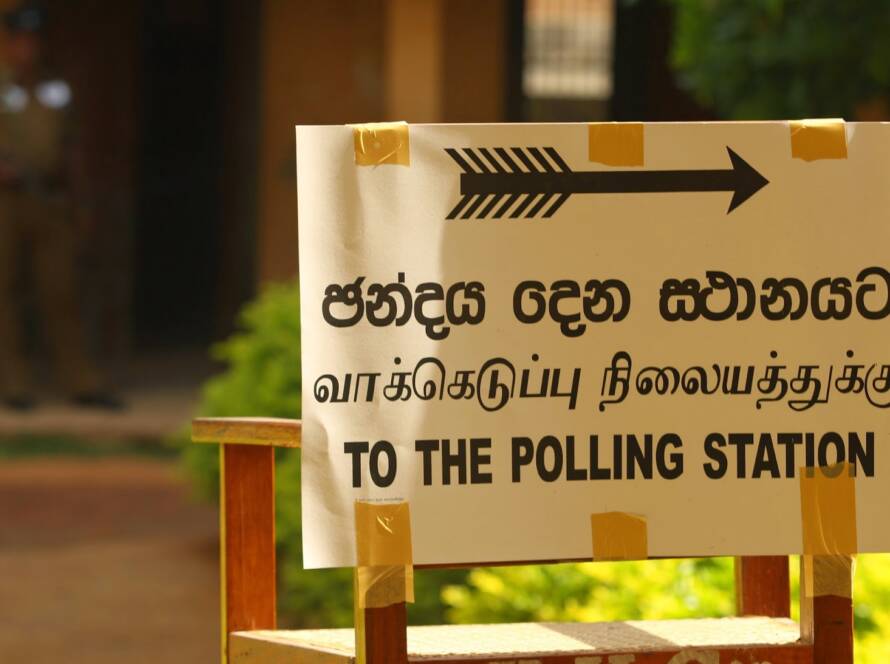By Nithu Ardithya
Despite facing formidable challenges in recent years, Sri Lanka’s tourism industry is experiencing a remarkable resurgence, signaling a promising future for economic recovery and growth.
Tourism constitutes around 5% of the nation’s GDP. In 2019, the country welcomed more than 2.5 million visitors, resulting in revenue exceeding USD 4 billion.
In April 2019, Sri Lanka’s tourism sector was severely impacted by the Easter Sunday terrorist bombings, claiming the lives of over 250 individuals at hotels and churches.
Subsequently, as the country began to witness a gradual return of tourists towards the end of the same year, the onset of the COVID-19 pandemic dealt another blow before any significant recovery could take place. By 2022, amidst economic and political instability, essential resources like fuel became increasingly scarce, further dissuading tourists from visiting Sri Lanka.
Recent data from the central bank reveals a significant milestone for Sri Lanka’s tourism industry, with earnings exceeding USD 500 million for the first time since the onset of the pandemic. In the first three months of 2023, tourism revenue soared to USD 529 million, accompanied by a total of 335,679 arrivals, marking a noteworthy recovery compared to the previous year.
Despite political unrest dampening traveler interest, the surge in arrivals signals renewed confidence in Sri Lanka as a desirable destination. Additionally, Sri Lanka’s recognition as one of Forbes magazine’s top 23 destinations further underscores its appeal to global travelers.
January 2024 heralded a promising start, with tourist arrivals surpassing expectations and signaling a resurgence in traveler confidence. January witnessed a significant uptick in arrivals, surpassing 200,000 for the first time in four years.
This marked a remarkable turnaround compared to previous years, with a 103.1% year-on-year increase compared to 2023. Although January’s performance remained 13% lower than the benchmark year of 2018, the upward trend provided a glimmer of hope for a revitalized tourism industry.
To stimulate tourism growth, the Sri Lankan government has rolled out various initiatives. These initiatives have contributed to Sri Lanka’s tourism revival in 2023. The decision to issue free tourist visas to visitors from select countries, including China, India and Russia since October of 2023, is a notable step aimed at boosting tourist inflows. This pilot initiative is slated to run until March 31, 2024, and has already garnered significant interest from numerous tourists.
Furthermore, the government has been focused on enhancing the overall visitor experience by implementing measures such as streamlining and simplifying the visa process. This includes the introduction of an online visa system, aimed at facilitating easier access for tourists seeking entry permits.
Stakeholders are optimistic that by maintaining momentum and offering a curated lineup of events in the first half of the year, the industry will experience accelerated growth. Furthermore, the launch of first global tourism marketing campaign in 16 years under the tagline “You Will Come Back For More” signals a concerted effort to rebrand Sri Lanka as a premier destination.
While higher tourist arrivals are undoubtedly a positive sign, industry stakeholders recognize the need for a strategic shift towards attracting high-spending tourists to drive sustainable growth. The goal is clear: to elevate Sri Lanka’s tourism offerings to match the expectations of a premium clientele and unlock greater revenue potential for the economy.
From January to November 2023, the tourism sector contributed USD 1.8 billion in revenue, marking a significant 78% increase compared to the corresponding period in 2022. Tourism stands as Sri Lanka’s third-largest generator of foreign exchange.
According to government data, on average, each tourist spends USD 181 per day. Experts in the field propose that by developing Sri Lanka’s islands into high-end tourist destinations, there is potential for tourists to spend more than USD 1,000 per day.
However, amidst the optimism, challenges loom on the horizon. The mass migration of skilled workers abroad has created workforce shortages, posing an obstacle to delivering quality services. According to the Sri Lanka Institute of Tourism and Hotel Management (SLITHM), skilled workers comprise less than 40 percent of the tourism sector.
Industry stakeholders are urging the government to exempt them from VAT, citing the generation of foreign exchange revenue in the sector. Businesses serving tourists bear the burden of Tourism Development Levy, Income Tax, and Turnover Tax. However, concerns have been raised regarding the government’s taxation policies, with the recent increase in VAT 15% – 18% exacerbating fears among businesses catering to tourists.
Yet, amidst these challenges, opportunities abound. The government’s decision to issue free tourist visas to visitors from select countries, coupled with efforts to enhance the overall visitor experience, may bring desired results in the long term.
As Sri Lanka’s tourism sector looks to the future, it is on the brink of a significant transformation aimed at achieving ambitious objectives. Despite the ongoing difficulties, Sri Lankan Tourism Development Authority (SLTDA) has set an ambitious goal of 2.3 million tourists and hopes to generate over USD 4 billion in revenue for 2024.
This is in addition to building on the strong momentum gained in 2023, when Sri Lanka welcomed almost 1.5 million visitors and surpassed USD 2 billion in earnings since 2019. Anticipated increases in tourist arrivals from vital markets like India, Russia and Europe, along with the expansion of flight services, present favorable opportunities for sustained growth and success.
In 2024, Sri Lanka is embarking on a journey towards tourism revitalization characterized by resilience, innovation and resolute determination. Despite encountering significant hurdles, the nation’s tourism sector is undergoing a renaissance, driven by a strategic emphasis on enticing high-end tourists and nurturing sustainable development.
Sri Lanka can in that sense position itself well to emerge stronger than before, solidifying its status as a leading global tourism destination.
Nithu Ardithya is an undergraduate of KDU Faculty of Law who can be reached at nithuardithya@gmail.com.
Factum is an Asia-Pacific-focused think tank on International Relations, Tech Cooperation, and Strategic Communications accessible via www.factum.lk.
The views expressed here are the author’s own and do not necessarily reflect the organization’s.


